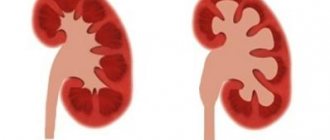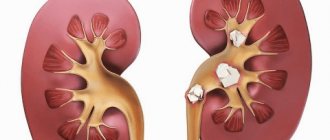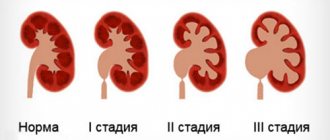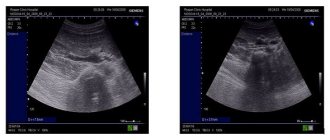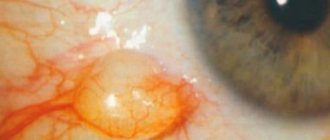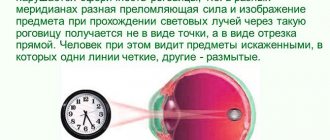A disorder characterized by two or more episodes in which the patient's mood and activity level are significantly disturbed. These disorders include cases of high mood, increased energy and increased activity (hypomania or mania) and low mood and a sharp decrease in energy and activity (depression). Repeated episodes of hypomania or mania alone are classified as bipolar.
Included:
- manic depression
- manic-depressive: illness
- psychosis
- reaction
Excluded:
- bipolar disorder, single manic episode (F30.-)
- cyclothymia (F34.0)
last modified: January 2015
Outcomes
Restoration of working capacity is determined individually, depending on the nature of the disease that required nephrectomy. Postoperative mortality averages 3-4%. 5-year survival rate after N. for kidney adenocarcinoma is 32.3%—43.3%. The best results are observed in patients with renal adenocarcinoma, Crimea NEPHRECTOMY is carried out through thoracoabdominal access. With renal tuberculosis, 30% of patients die within 6 to 12 years from a specific process in the remaining kidney. With nephrolithiasis, in 1 - 2% of patients, stones may appear in the remaining kidney after 1 - 2 years.
Bibliography:
Lopatkin N. A. Kidney tumors, in the book: Klin, oncourology, ed. E. B. Marinbakha, p. 5, M., 1975, bibliogr.; Pytel Yu. A. and Alyaev Yu. G. On rational surgical intervention for kidney tumors, Urol. and nephrol., No. 5, p. 63, 1978; Pytel A. Ya. and Grishin M. A. Diseases of a solitary kidney, p. 154, M., 1973, bibliogr.; Trapeznikova M. F. Kidney tumors, M., 1978, bibliogr.; I) eb 1 ed G. L'abord transtho-rac-ique du rein, Acta urol. belg., v. 38, p. 121, 1970; Mayor G. a. ZinggE. J. Urologic surgery, NY, 1976.
Yu. G. Alyaev.
Methodology
NEPHRECTOMY is performed under general anesthesia or local anesthesia. Lumbar extraperitoneal, anterior transperitoneal and thoracoabdominal approaches to the kidney are used (see Kidneys). The surgical technique and choice of surgical approach depend on the nature of the disease and its location.
Rice. 1. Schematic representation of subcapsular nephrectomy: a - the kidney (1) is decapsulated, the fibrous capsule (2) is peeled off towards the hilum of the kidney and dissected with a circular incision; b — fibrous capsule (2) is dissected and displaced, the renal vessels of the KZ are exposed).
The most common is lumbar N. After exposure, the kidney is isolated from the intrarenal tissue and its vascular pedicle is released. The ureter, having previously been ligated, is crossed in the middle third. The renal vessels (artery and vein) are clamped and crossed. The kidney is removed. The stump of the renal pedicle is ligated, and then additionally sutured and ligated. In some cases, for example, with pronounced sclerosing paranephritis and especially pedunculitis, they resort to subcapsular nephrectomy according to Fedorov. The fibrous capsule is peeled off bluntly from the renal parenchyma up to the renal hilum and a circular incision is made of the fibrous capsule from the inside outwards according to the renal hilum in the direction of the renal sinus tissue. This makes it possible to isolate the vascular pedicle (Fig. 1), which is then clamped with clamps and ligated. The operation is completed with mandatory drainage of the retroperitoneal space.
rice. 2. Schematic representation of the initial stage of transperitoneal nephrectomy: after laparotomy, the posterior layer of the peritoneum (1) and the retroperitoneal fascia (2) are dissected; The renal vessels (3) are isolated and a clamp is placed under them; 4 - kidney; 5 - liver; 6 - gallbladder; 7 - duodenum.
Transperitoneal N. is indicated for Wilms tumor in children and kidney adenocarcinoma in adults. After exposing the renal vessels (Fig. 2), the inferior vena cava and the aorta, the renal artery is first mobilized and ligated, and then the veins. The kidney is removed en bloc with the intrarenal tissue and adjacent fascia. The retroperitoneal space is drained through the counteraperture below the 12th rib in the lumbar region. The integrity of the posterior layer of the peritoneum is restored with sutures. The abdominal wall wound is sutured tightly.
Thoracoabdominal N. is indicated for large tumors of the kidney and the spread of the blastomatous process through the renal and inferior vena cava, as well as when paracaval, paraortic lymph nodes and neighboring organs are involved in the process. After exposing the kidney, the surgical technique is the same as for transperitoneal N. Having removed the kidney, the retroperitoneal space is drained and the posterior layer of the peritoneum and the diaphragm are sutured. The pleural cavity is also drained. The wound is sutured tightly. The advantage of thoracoabdominal N. is the wide exposure of not only the renal vessels, but also the inferior vena cava and aorta, as well as the possibility of removing the kidney en bloc with perinephric tissue and fascia.
Complications
The most common and serious complication is bleeding from the vessels of the renal pedicle, inferior vena cava or from a damaged adrenal gland. If the inferior vena cava is damaged, a vascular suture with an atraumatic needle is indicated (see Vascular suture). If the ligature slips off the renal pedicle, you should press the bleeding vessels with your finger, drain the wound of the blood and re-apply the ligature. Bleeding from the adrenal gland is stopped by suturing the site of injury with a blanket suture. With the lumbar approach, detected unintentional injuries to the pleura or peritoneum are sutured. Rare complications of the postoperative period are intestinal fistulas (see). The best prevention of complications is the correctly selected access, providing a wide range of surgical access.
In the postoperative period, it is necessary to create adequate blood replenishment, normalize water and electrolyte balance, and carefully monitor diuresis (see). In cases of uncomplicated N., it is allowed to get up and walk the very next day after surgery. If the postoperative period is smooth, patients are discharged on the 15th-16th day, followed by a gentle regimen.
ICD code condition after nephrectomy
ICD-10 category: N28.8
ICD-10 / N00-N99 CLASS XIV Diseases of the genitourinary system / N25-N29 Other diseases of the kidney and ureter / N28 Other diseases of the kidney and ureter, not classified elsewhere
Kidney hypertrophy
Compensatory restructuring of the only kidney remaining after nephrectomy occurs in two stages. The first stage is characterized by relative functional insufficiency of the organ (the function of the remaining kidney has not yet increased significantly), loss of functional reserve (all nephrons are functioning), acute hyperemia of the kidney and incipient hypertrophy. The second stage is characterized by: complete functional compensation (kidney function doubles), restoration of functional reserve (some nephrons do not function), moderate but stable hyperemia and hypertrophy increasing to a certain limit. From the first day after nephrectomy, the remaining kidney mobilizes its reserve forces, and, first of all, it adapts to the excretion of water and sodium chloride. Nitrogenous substances, accumulating in the blood, serve as an initiating factor for the development of compensatory hypertrophy of the kidney. Hypertrophy of both the glomerular and tubular zones occurs, and not only volumetric, but also functional. The reserve capacity of the kidney is great. Normally, only 1/4 of the renal parenchyma functions at a time. After nephrectomy, the blood flow of the remaining kidney increases by 30-50% and its functional capacity remains at a close to normal level. The functions of a lost kidney take a long time to compensate. Some authors believe that compensation is completed only 1-1.5 years after surgery. As a result of the elimination of one kidney, the load on the remaining nephrons doubles, the intense activity of which gradually leads to functional exhaustion of the remaining organ. According to urologists, people who have undergone nephrectomy cannot be considered absolutely healthy even when they have no signs of damage to the remaining kidney. A single kidney is not capable of completely taking over the functions of two. The reserve capacity of one kidney is limited, and it is sensitive to various endo and exogenous influences.
Nephroptosis
Synonyms: Prolapse of the kidney, mobile, mobile, “wandering” kidney.
Nephroptosis is a disease characterized by pathologically increased kidney mobility. Normally, in a healthy person in a horizontal position of the body, the right kidney is located at the level of the I-III lumbar vertebrae, the left - at the level of the XII thoracic-II lumbar vertebrae. When you inhale, the kidneys move down 1/2 the height of the lumbar vertebral body (2-2.5 cm), and when you exhale, they return to their original place. This value is the respiratory mobility of the kidneys. When moving from a horizontal to a vertical position, the kidneys normally shift to the height of the lumbar vertebral body (4-5 cm). Nephroptosis should be distinguished from visceroptosis (splanchnoptosis), as a manifestation of pathologically increased mobility of all internal organs due to systemic weakness of connective tissue.
Epidemiology
In the vast majority of cases, nephroptosis affects women. In children, a unilateral or bilateral increase in kidney mobility can be temporary during the “stretching” period and disappear as they grow and develop. The development of nephroptosis is promoted by hereditary and constitutional factors - asthenic physique, weakness of connective tissue. They can be manifested not only by kidney prolapse, but also by splanchnoptosis, abdominal hernias, genital prolapse, rectal prolapse, etc. Excessive physical activity caused by straining, heavy lifting, and previous trauma to the lumbar region, especially against the background of predisposing factors, play a certain role in the appearance of nephroptosis. . Nutrition plays an important role in the development of nephroptosis. Insufficient body weight and especially rapid and dramatic weight loss can contribute to the onset of the disease.
Prevention
To prevent the development of nephroptosis, it is necessary to avoid factors that constantly increase intra-abdominal pressure: lifting excess weights, chronic constipation, pulmonary diseases accompanied by chronic cough. To prevent nephroptosis, especially in people of asthenic constitution, it is necessary to eat properly and avoid rapid significant loss of body weight.
Classification
There are unilateral and bilateral nephroptosis. It should be immediately emphasized that bilateral nephroptosis is not a disease, but a manifestation of splanchno(viscero)ptosis. In the characteristics of nephroptosis, it is customary to distinguish post-traumatic nephroptosis. A number of diseases are accompanied by an increase in the mass of the kidney, which, against the background of the weakness of its fixing apparatus, can manifest as secondary nephroptosis. Complications of nephroptosis are arterial hypertension, hematuria, unilateral (on the descending side) chronic pyelonephritis, much less often nephrolithiasis and GNF (hydronephrosis).
Pathogenesis
Nephroptosis develops gradually, often against the background of predisposing factors (asthenic physique, low nutrition). During physical activity, the kidney moves downward due to an occasional increase in intra-abdominal pressure. Gross hematuria occurs rarely and, as a rule, characterizes sudden and acute disorders of the venous hemodynamics of a prolapsed kidney. Pathological mobility of the kidney rarely interferes with the outflow of urine from the collecting system.
Diagnostics
When physically examining patients with nephroptosis, it should be remembered that palpation of the unchanged lower segment of the kidney is also possible with a tumor of its upper segment. Therefore, if a kidney is found that is accessible for palpation, an ultrasound scan of the kidneys should be performed. Particular attention, taking into account the pathogenesis of arterial hypertension in nephroptosis, should be paid to measuring blood pressure while lying and standing, on each side. Increase in systemic blood pressure by more than 20 mmHg. in an orthostatic position on the affected side may indicate functional stenosis of the artery of the prolapsed kidney. For organic fibromuscular stenosis on the affected side, constant arterial hypertension with increased blood pressure in orthostasis is more typical. Paradoxical arterial hypertension indicates possible stenosis of the vein of the prolapsed kidney.
Laboratory research
Peripheral blood parameters and biochemical parameters, as well as the concentrating ability of the kidneys in patients with nephroptosis do not change. Signs of impaired venous blood flow during urine examination may include microhematuria, which increases in orthostasis and after exercise, as well as macrohematuria. Phase-contrast microscopy of urine sediment from patients with nephroptosis is characterized by changes in red blood cells secreted by the kidney. It should be especially emphasized that the identification of micro- and especially macrohematuria in the differential diagnostic aspect must necessarily include, first of all, the exclusion of neoplasms and calculi of the kidneys and urinary tract using ultrasound, excretory urography, X-ray multispiral tomography and MRI, cystoscopy and, if necessary, ureteropyeloscopy.
